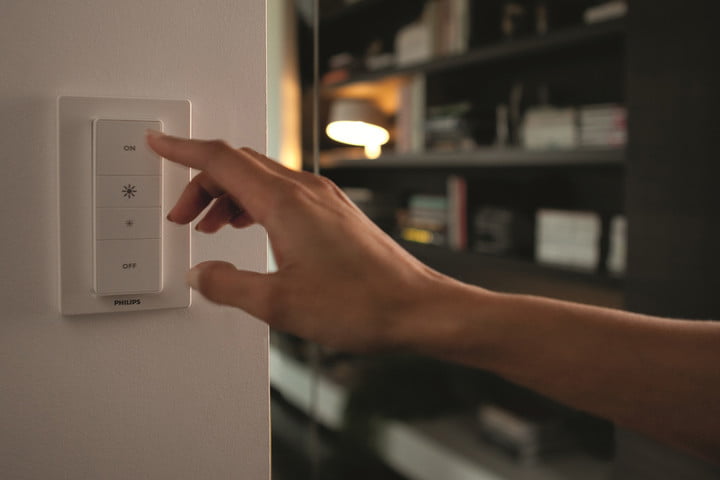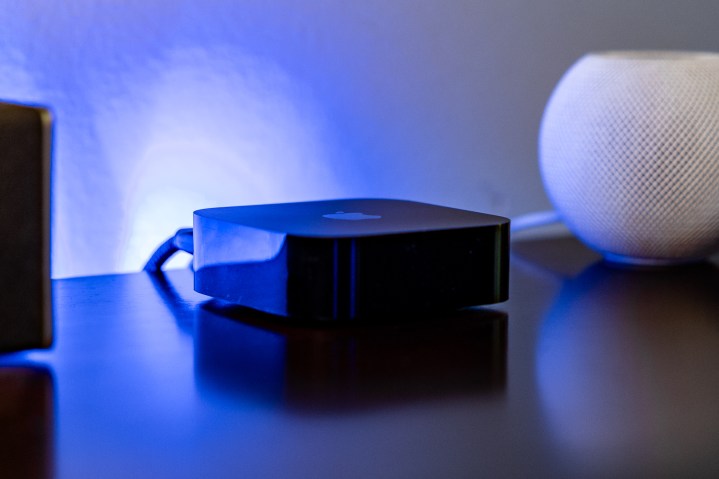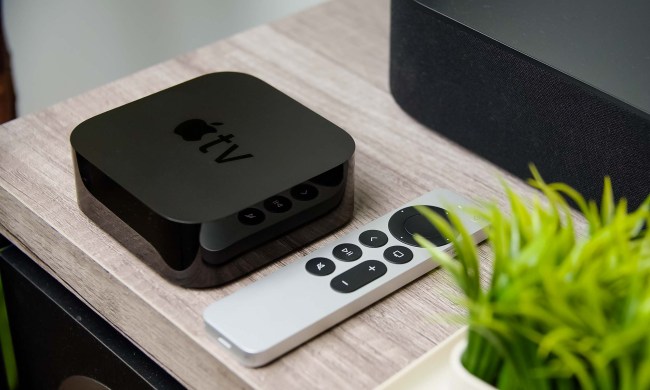
Accessing your favorite shows and movies is easier than ever, thanks to how good the latest streaming devices have gotten. While there are plenty of great options out there, the Amazon Fire TV Stick, and Apple TV both deliver tons of great content right to your TV without any additional hassle.
Both the Apple TV 4K and the Amazon Fire TV Stick 4K Max are stellar options that create a hub for accessing the best streaming services, downloading apps, and even playing games. That means that once you invest in one, you won’t need to worry about picking up another streaming device, because they have it handled. However, there are some pretty significant differences between the two, from price to interface and more, that are worth checking out. So, which one is the right option for you? Let’s dig in.
User interface
Both Apple and Amazon have put in the time to deliver polished interfaces that are easy to use. You can quickly find your favorite content without scrolling through endless menus, and you can easily download the most popular streaming apps to ensure you can always rewatch your comfort shows after a long day.

Apple TV 4K has a Home Screen that has rectangular app icons that can be rearranged however you prefer. This makes it easy to have your most used apps right there and waiting for you when you turn it on. Siri is also available through the interface by using the Apple remote, allowing you to use voice commands to search or launch apps. There is also a delightful lack of any kind of ads within the Apple TV interface, which makes it a much more enjoyable experience overall.
Alternatively, the Amazon Fire TV Stick 4K Max features a tile system for it’s interface. The tiles will populate with your most recently used apps, alongside its internal recommendation engine. This means that Amazon delivers a more personalized experience than Apple, which can be handy for discovering new content you didn’t know existed. You can also search using Alexa, making it easy to find apps without needing to do it manually, although that does remain an option available to you. The big downside of Amazon Fire TV is the inclusion of ads, which can be aggravating when they auto-play as it opens.
Both Amazon and Apple come with an included remote, which makes it easy to trigger the voice assistant or search manually. They allow you to search, as well as handle the remote, all from one device, instead of needing multiple remotes in order to control the hub and your television separately.
Content
While streaming through either Amazon or Apple, you’ll need to download the apps that you want to watch. Thankfully, both services have access to most (if not all) of the best apps out there, whether you want video on demand (VOD) or live streams. You can find big names like Amazon Prime Video, Netflix, and Hulu, along with FAST streaming options like Tubi.
Along with streaming your favorite shows and movies, both Amazon and Apple let you access a variety of games. The Amazon Fire TV Stick delivers access to both Xbox Game Pass and Amazon Luna. This means that you can use it to access and play some of your favorite games, without needing any extra steps to get there.
Apple TV doesn’t include access to Xbox Game Pass, but it does let you play games from Apple Arcade. There are more than 200 games available, and all of them are available across all iOS devices, along with being free of ads or in-app purchases. Apple seems to be thinking about the future of gaming with Apple TV as well, if the new addition of Apple’s A15 Bionic chip is anything to go by. It means that Apple is putting serious thought into the future of Apple TV, and ensuring that this streaming device will be able to handle anything you ask it to do for years to come.
Smart home

If you have a variety of smart home devices, then you’re in luck with both the Fire Stick 4K Max and Apple TV 4K. Apple supports its HomeKit standard, while the Fire TV Stick can control any Alexa-enabled devices.
Apple has put some thought into the future of connected homes as well, making Apple TV Thread enabled. This means that smar thome devices that are thread enabled with connect with your Apple TV, including lights, thermostats, smart cameras, and more. Thread works as a low-powered wireless communications system that’s independent of your home wireless network. Only one thread device needs actual access to the internet, since all the other devices are “threaded” together.
Both devices also support smart cameras, making it easy to check who is at the door without needing to actually get up to do it. However, it is worth noting that Amazon has far more Alexa-compatible devices than Apple’s list of HomeKit supported options, which may be the deciding factor for some folks.
Casting and mirroring

If you want to share content on your phone or tablet, you can do so with either the Apple TV or Amazon Fire TV Stick. Apple offers AirPlay, allowing any iOS device to share its screen. Sadly, Apple TV doesn’t play nicely with non-Apple devices, so you won’t find yourself connecting your Android smartphone any time soon.
Amazon Fire TV Stick plays a similar card, supporting screen mirroring from some Android devices, but not from iOS and MacOS devices. You want a Miracast-enabled device in order to mirror your screen to the Amazon Fire Stick, and its worth noting that while mirroring your screen, Alexa functionality is not available.
This means you plan to routinely mirror content from your phone to your TV, you’ll want the option that supports the smartphone and tablets you’re already using.
Video and audio quality

When it comes to the quality of video and audio, there are a few things to remember. While both apps do have access to 4K, you still need a TV that is capable of displaying in that resolution (for more on this, check out our 4K TV explainer). This means if you’re watching on an older television, even if you open a 4K stream, it isn’t going to display in that resolution. Likewise, its worth remembering that you’ll want a high-speed internet connection in order to get the best possible experience while watching.
The Apple TV 4K and the Fire Stick 4K Max both stream in 4K, and include HDR 10+ HDR support. This means that whichever device you choose, you should receive crystal clear images up to 4K, so long as the streaming service you’re watching has it available.
Apple TV 4K also has a unique advantage with Spatial Audio. That’s because Apple TV 4K connects with AirPods Pro 2 or the AirPods Max, and once head tracking is turned on, it delivers big movie theater sound from the comfort of your home. In terms of general audio quality, both Amazon and Apple support up to Dolby 7.1 and include support for Dolby Atmos.
How much do they cost?

Price is where you’ll see a major difference between these two devices. Amazon has the more affordable option at only $60 for the Fire Stick Max 4K, while the Apple TV 4K (WiFi + Ethernet model) is much pricier at $150. While there is a bit of sticker shock here, it’s worth remembering that Apple has a lot more under the hood and is betting you’ll want to keep the Apple TV 4K as your main hub for years to come.
Under the hood, it’s clear why there’s a price disparity. Apple TV 4K comes with 128GB of onboard storage versus the 16GB on onboard storage with the Fire TV Stick Max 4k. Apple also has the leg up with better connectivity thanks to it’s integration with Thread.
Conclusion

Trying to decide which of these streaming devices is better for your home really comes down to which ones suits your needs better. Both Amazon and Apple have delivered excellent streaming hubs filled with features that are easy and intuitive to use, and also act well as smart home hubs.
For Android users, Xbox gamers, and folks on a budget, the Amazon Fire TV Stick 4K Max is probably the better pick. At only $60 ,it’s less than a new AAA video game, delivers access to Game Pass along with Amazon Luna, and you can mirror your screen.
Alternatively, if you’re already an iOS user, you’re investing in Thread devices for your smarthome, or you want a hub that is built to last for at least a few years, the Apple TV 4K is the better bet. It connects with a variety of devices, and can mirror screens from iOS devices. The added benefits of a ton of onboard storage and a powerful A15 Bionic chip aren’t anything to scoff at either.
In the end, the best choice will likely be based on what smart home gear you own and whether or not you live in the Android ecosystem, best suited for Fire TV Stick, or the Apple ecosystem, best suited for none other than the Apple TV.



